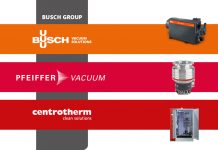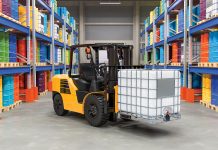The age-old discussion between print technologies for labelling, do I purchase a laser printer, or an inkjet printer? The decision may seem simple for some, but others may need a little more guidance on the issue and that’s where Dura-ID can help.
There are several things you need to take in to consideration when it comes to making the best decision for your business to bring your printing in-house.
1. What do I need my printer for?
Is my printer going to be solely a label printer or do I need it to perform other functions such as printing documents in the office? If your answer is the latter, a desktop or larger format laser printer is probably the option you need to consider. If you have a separate printer for your documents and need a dedicated label printer, inkjet could be a better choice.
2. Do I need to meet any regulations?
The GHS regulation stipulates that you must include signal words, hazard pictograms and statements, product identifiers, precautionary statements and manufacturer information. These can be produced on either a laser or inkjet printer. If you need a 3-part fully BS5609 approved solution, backed up with certification, Dura-ID offer both laser and inkjet machines that are capable of producing full 3-part BS5609 solutions. This includes the adhesive, the face material and the print and our experts can provide you with the relevant information to ensure you are compliant with the by sea export regulation.
3. What type of label do I need?
If you’re going to need lots of different sizes of labels, either an inkjet or laser printer could work for you. There are benefits to both technologies. With a laser printer, the media is sheet-fed and you can opt for several media trays that all hold a different format or size of sheet, allowing for the least intervention from yourself during the printing process. However, this can be a wasteful approach, particularly if you only need one or two labels and use a full sheet of 8 labels as that correlates with he size you need. An inkjet label can be supplied in so many formats and sizes, to suit the printer of course, and with the media being on a roll, it allows for easy small batch label printing. However, the media being on rolls also presents a downfall, the need for human intervention when changing label size as the reel itself will need to be removed and replaced.
4. Is my label going to be text or colour heavy?
Laser printers are great at producing crisp black text and barcodes, it’s where they come in to their own, particularly for multi-lingual labels in the smallest possible point size. When it comes to inkjet printers, these are unrivalled when printing graphically heavy designs. If you need your product to stand out against your competitors on a shelf in a retail environment, then an inkjet is definitely for you.
5. How quickly do I need my labels?
Speed varies within the ranges of available laser and inkjet machines, and this is where your budget needs to start speaking. Generally when it comes to inkjet printers, the slower the print time, the cheaper the machine. With laser printers, the main time to consider is the warm up time for the fuser unit, which is minimal. These machines can output a large number of sheets very quickly.
6. Do I want to future proof my business?
There are limitations when it comes to all print technology, but the big one for us is that industry 4.0 within the chemical sector is moving to the forefront and we’re seeing it more. Ensuring your printer can be added in-line to your manufacturing process is essential to moving towards digitisation. Inkjet printers with their various options such as peel units will allow you to introduce this in to your business. With laser printers, the vast majority are sheet-fed, meaning that manual handling is required.
Discuss your label requirements and start your journey with the team at Dura-ID today by calling 0114 242 2111 or email at info@dura-id.com.










